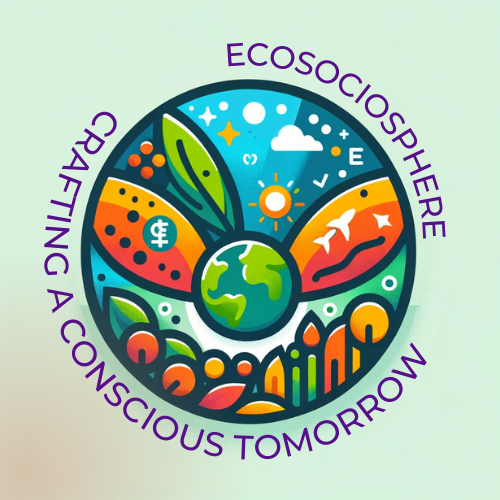Fun fact: even newborns prefer looking at faces to scrambled shapes—suggesting our brains are wired to recognize meaning, relationships, and narrative almost from birth.
But why do humans tell stories? Why did our ancestors gather around fires to pass down tales of hunts, gods, love, loss, or tricksters? The title of this piece—“Why Humans Tell Stories”—points to something deeper than entertainment. It points to imagination as a survival tool, a social glue, and perhaps our most radical evolutionary weapon.
In this article, I’ll argue provocatively that storytelling isn’t just a cultural flourish—it arose from the same evolutionary pressures that shaped language, cooperation, and consciousness. We’ll explore how stories shaped tribes, forged values, and still tug at our guts today.
The Paradox: Why waste time on fiction?
At first glance, fiction seems frivolous. If you’re living at the edge of starvation and danger, why spin tales about jungles, gods, or impossible quests? But this “waste” is part of the wonder: stories let us rehearse risk, rehearse social dynamics, rehearse morality, in a safe sandbox.
One clue comes from anthropological work among hunter-gatherers. For example, a study of the Agta people of the Philippines suggests that groups with good storytellers cooperate better and that good storytellers had higher reproductive success than even skilled hunters. In other words, being able to narrate—shape communal memory, instruct, warn—was itself a fitness trait.
The ability to imagine alternatives—“what if we do this?” or “what if the lion attacks here?”—lets us pre-empt danger. Stories are simulations. They let us rehearse social dilemmas, alliances, betrayals, and triumphs without risking real lives.
The roots: language, mimicry, gossip
To understand why storytelling emerged, we need to look at precursors: speech, mimicry, and gossip.
Mimetic roots: The “mimetic theory” suggests that before we had full language, our ancestors used gesture, pantomime, and rehearsal of actions to communicate complex ideas (like dance or ritual). Over time, symbolic speech evolved from that foundation.
Gossip and vocal grooming: Anthropologist Robin Dunbar argued that human language partly evolved to replace social grooming. In primates, grooming builds bonds. But once groups got too big, you can’t physically groom everyone. Vocal conversation—exchange of stories, gossip, social news—became a social lubricant. In effect, gossip is storytelling with consequences: it binds social norms, monitors behaviour, and warns reputations.
So, storytelling is, in a way, gossip turned mythic. It retains social surveillance, moral oversight, and group cohesion, but on a grander scale.

Functions of story: more than entertainment
We tell stories because they serve evolutionary and psychological functions. Here are six core ones:
- Sense-making
Our brain craves patterns. In ambiguous situations, we instinctively narrativize. Experiments show that people see meaning behind random shapes moving on a screen—instantly turning them into characters, plots, motives. A story is how we “connect the dots.” - Meaning and purpose
Life is messy and random. Stories impose structure: beginning, middle, end; struggle, transformation. They orient us toward purpose. Myths, religious epics, and national founding stories—these offer frameworks to navigate life’s chaos. - Connection and empathy
When we hear another’s story, our brains resonate. We “walk in their shoes.” Neural synchrony sometimes emerges between teller and listener. Sharing narratives builds trust, fosters intimate bonds, and creates shared identity. - Cooperation and social norms
Stories transmit moral codes: here’s how good people act, here’s what happens to cheaters, here’s the glory of sacrifice. Legends of heroes set standards. In effect, stories enforce cooperation without brute force. - Catalyst for change
Fiction often presents a conflict, a crisis, and then a transformation. We learn about sacrifice, struggle, and metamorphosis. That pattern pushes us to change ourselves or society. Great revolutions, ideals, and reform movements often begin as stories. - Resilience and catharsis
In times of trauma, stories help us process grief. They offer release (catharsis), emotional balance, and metaphorical distance. Witnessing characters suffer—and heal—gives us permission to cry, to hope, to rebuild.
These functions are not separate. They intertwine. A mythic epic teaches social norms, strengthens solidarity, and offers emotional catharsis all at once.
Stories as social architecture
We live inside narratives. Nations, religions, corporations—all are stories. A country is a shared fiction: “we the people,” “liberty,” “heritage.” Corporations spin brand legends. Political leaders tell grand narratives of “us vs them.”
When a shared story fractures, society feels unmoored. Identity crises, polarization, and conflict often follow when people no longer share a common narrative. In that sense, stories are architecture—they build bridges (or walls) between us.
Take the Indian subcontinent. The national myth of “unity in diversity” contrasts with local, caste-based, sectarian, and regional myths. When these narratives clash, identity becomes a battlefield. The push and pull of stories shape politics, culture, and social justice.
Anecdote: my grandmother’s tales
I once visited my grandmother in a small village. As darkness fell, she used to recount stories of her childhood—vivid, strange, sometimes supernatural. She talked of floods, famines, migrations, and cunning neighbours. It was half history, half myth.
Afterwards, I asked my younger cousins: “Did those really happen?” They shrugged. But a striking thing: even if the events were exaggerated, the lessons stuck—about thrift, generosity, caution, resilience. Those stories shaped ethics and memory in a way dry factual statements never could.
That’s the thing about storytelling: truth is filtered through emotion, and the emotional memory often outlasts handshake deals or official records.
The danger of “just-so stories”
But beware: evolutionary storytelling can become its own fiction. In science, the term “just-so story” refers to speculative narratives that explain a trait post hoc without evidence. One must guard against weaving elegant tales that sound plausible but lack empirical grounding.
So, while we can suggest that storytelling was adaptive, we must not overstate causality. As in all science, humility and testability matter. Still, the convergence of anthropology, neuroscience, psychology, and evolutionary theory makes the narrative compelling.
Modern mutation: digital story capes
Today, humanity’s storytelling has multiplied in form. Social media, cinema, video games, and virtual reality—all are evolved story delivery systems. Memes are micro-stories; tweets are condensed narratives of self. Netflix serials are modern campfires.
But there’s risk. Because stories are powerful, they can manipulate: propaganda, conspiracy theories, partisan narratives. We live in a world where fake stories can mislead millions. Evolution didn’t calibrate us for a 24×7 narrative buffet; we’re vulnerable.
So, the question isn’t just why we tell stories, but which stories we let dominate.
Conclusion
We tell stories because imagination is part of what made us human. Storytelling is not an ornament—it is the scaffold upon which communities, identities, morals, and even mental health rest. From mimetic roots to global entertainment empires, stories have shaped who we are.
So next time you tell someone about your childhood, tweet, or read a myth, remember: that simple act is ancient, powerful, and evolutionary. The stories you tell, the ones you internalize, map your world. Choose them wisely—for voice is power, and narrative is survival.
Call to action / final thought:
What’s your story? What grand narrative do you live by, consciously or unconsciously? Try telling a new one that serves humanity, not just your ego. Because in the end, stories don’t just tell us—we tell them back.
Author’s Note
I wrote this because I believe imagination is our forgotten muscle. In a world drowning in data, we need myth, metaphor, and narrative more than ever. I hope you’ll revisit this topic, question your own stories, and maybe even tell a new one.
G.C., Ecosociosphere contributor.
References and Further Reading
- The Ancient Art of Storytelling (video)
- On the Origin of Stories: Evolution, Cognition, and Fiction (lecture)
- The Evolutionary Advantage of Storytelling (video)
- Stone Age Cinemas and the Six Evolutionary Functions of Story
- Grooming, Gossip and the Evolution of Language
- Mimetic theory of speech origins




